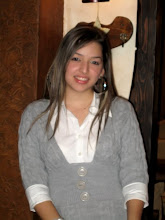Myocardial Infarction
A great amount of people everyday suffer from cardiovascular accidents such as infarction of the heart. These accidents affect the vascular system as well as the heart itself and represent the most common cause of death around the world.

King Saud University
Source: http://faculty.ksu.edu.sa/73698/Pictures%20Library/Forms/AllItems.apx
Deposits of fat and cholesterol can take place within vessels causing narrowing of the arteries. such deposit is related to a high-fat diet. in addition, blood clots are likely to form at the site of fatty deposits leading to blockage of an artery, thus impairing blood circulation within such area.
Infarction
Reference:
Source: http://faculty.ksu.edu.sa/73698/Pictures%20Library/Forms/AllItems.apx
Source: http://microcirculation.blogspot.com/2008/07/understanding-myocardial-infarction.html
Deposits of fat and cholesterol can take place within vessels causing narrowing of the arteries. such deposit is related to a high-fat diet. in addition, blood clots are likely to form at the site of fatty deposits leading to blockage of an artery, thus impairing blood circulation within such area.
Infarction
The heart muscle receives blood from the coronary vessels that surround the cardiac muscle. If one of the arteries that form part of the coronary circulation becomes partially clogged, the area of the heart normally supplied by this artery would be deprived from nutrients and oxygen. As a result, this area will stop contracting and eventually die. The cardiac cycle will get disturbed, anticipating the beginning of an infarction.
Four major factors that can lead to the development of an infarction include: high-fat diet, stress, lack of exercise and smoking. individuals experiencing the beginning phase of an infarction, usually complain from severe chest pain that spreads to the left arm, shoulder and epigastric region, sweating, nausea, vomiting, fatigue and intense discomfort.
What are the main causes of an infarction? How can we avoid it?
Reference:
Lebdeh, D., Dakroub, R., Seif, N., & Jarjour, Z. (2000). Life and Earth Sciences. Sin-El-Fil, Lebanon: Lebanese Educational Publishing Company.



 Source: (Blood pressure monitoring)
Source: (Blood pressure monitoring) 
